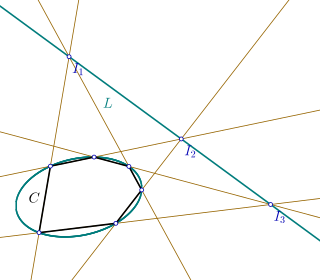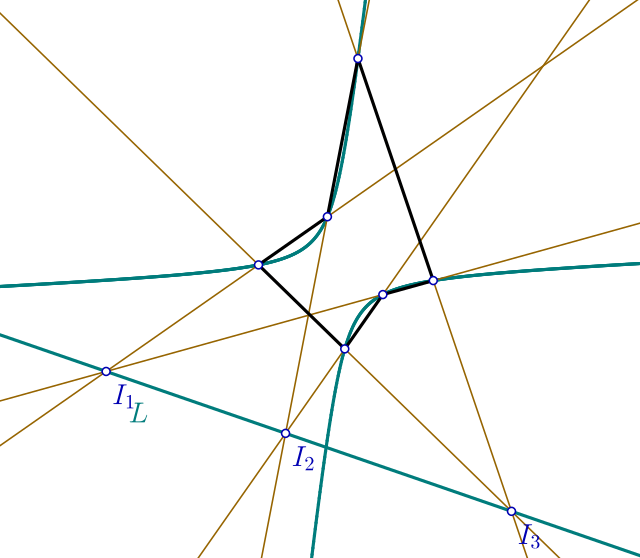Top Qs
Timeline
Chat
Perspective
Braikenridge–Maclaurin theorem
Converse to Pascal's theorem In geometry From Wikipedia, the free encyclopedia
Remove ads
In geometry, the Braikenridge–Maclaurin theorem, named for 18th-century British mathematicians William Braikenridge and Colin Maclaurin,[1] is the converse to Pascal's theorem. It states that if the three intersection points of the three pairs of lines through opposite sides of a hexagon lie on a line L, then the six vertices of the hexagon lie on a conic C; the conic may be degenerate, as in Pappus's hexagon theorem.[2]


The Braikenridge–Maclaurin theorem may be applied in the Braikenridge–Maclaurin construction, which is a synthetic construction of the conic defined by five points, by varying the sixth point. Namely, Pascal's theorem states that given six points on a conic (the vertices of a hexagon), the lines defined by opposite sides intersect in three collinear points. This can be reversed to construct the possible locations for a sixth point, given five existing ones.
Remove ads
References
Wikiwand - on
Seamless Wikipedia browsing. On steroids.
Remove ads
